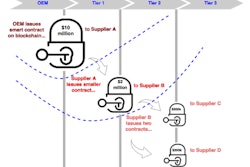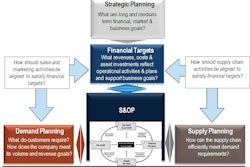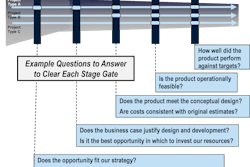
The world is changing. Nationalism is growing in popularity both domestically and internationally; here in the U.S., corporate tax reforms are gaining momentum, while trade agreements are increasingly at risk. Each of these developments threaten to impact supply chains—and the people who manage them—significantly in the months ahead.
As these and other global events unfold, many supply chain executives are re-examining their business strategies. According to a new Aberdeen Group study of senior managers at global corporations commissioned by TBM Consulting, companies with best-in-class supply chain performance indicators are actually taking a bullish view. These organizations are focused on U.S. infrastructure spending, free trade zones and trade agreements; other companies, by contrast, are preoccupied with managing costs versus growing their operations.
Regardless of approach, however, nearly every executive surveyed in the TBM/Aberdeen study was concerned about whether their process capabilities are sufficient to weather the changes ahead. There are a number of practices that inhibit agility and limit an organization’s capacity to respond to opportunities for growth, yet best-in-class companies are better prepared in their fundamentals (sales and operations, inbound logistics, inventory management and so on) and are more ready to address supply chain network design issues.
Supply chain organizations often make mistakes that limit their potential for future success. Here are five of the most common, along with steps to mitigate their impact:
1. Chasing Low-Cost Countries
Global options that just a few years ago seemed not only viable, but imperative are today losing their appeal—yet many organizations still believe otherwise. Chinese sources, for example, are shifting to Cambodia and Vietnam, causing supply challenges. African nations are plagued by unrest and geopolitical concerns, while India, in many cases, lacks necessary infrastructure.
The amount of lead time required, combined with the lack of flexibility in typical supply chains, is making many overseas sources problematic. Moreover, distant suppliers inhibit an organization’s ability to react to changes in end-user demand. Inventories tend to sit on the books, working capital suffers, and companies are left with difficulties in moving product.
In today’s environment, the better move is to be open to more reliable sources that can react to changes in demand. Consider total cost of the supplier relationship, instead of lower initial cost.
2. Indifference to Building Good Relationships
All too often, supply chain partners are measured on price variance, rather than the quality of the relationship. Pushing for the lowest possible cost from a supplier has its drawbacks, as cost pressures drive bad behaviors on the supplier side—and can have an even larger impact (e.g., product quality, on-time delivery) than the cost savings produced. As with most areas of business, supply chain relationships are important and should come first over a single-minded focus on price.
3. Less-than-Frequent Supplier Network Reviews
The TBM/Aberdeen study shows that fewer than 50 percent of companies conduct supplier reviews on a biannual basis or less. Typically, organizations negotiate with their suppliers, but don’t review their performance; this is a lost opportunity to improve both profitability and the long-term quality of the relationship.
As already stated, process is at the top of most organizations’ concerns. So why isn’t process addressed more often? How to meet changes in demand, how to manage variations, how to enact corrective measures and so on need to be discussed openly. Best practices exist—and they should be researched, presented and implemented whenever possible.
4. Lack of a Cohesive Network Management Strategy
Many managers don’t take the time to step back and ask themselves—and their organizations—the bigger questions. Are we sourcing the right items at the right locations, e.g., near our facilities? Do we have a framework for managing shifts in tariffs or foreign trade policies?
It’s important to reach an understanding of how to strategically manage and leverage product and material sources across a supplier network for maximum advantage. Toyota, for example, develops multiple supplier relationships in each of its manufacturing regions. Two suppliers are retained for each commodity; one is the primary, while the second, with a smaller percentage, is ready to step in should material flows be interrupted. The practice not only gives Toyota a risk mitigation plan, but also keeps suppliers engaged and competitive.
5. Insisting on Minimum Inventories in Order to Make Sales
Companies are often focused purely on sales without a thought given to the balance between cost to serve and revenues generated. Organizations need to evaluate the tradeoffs between inventory and customer service; a slightly slower sales rate may, in fact, be offset by reductions in carrying costs. This is a huge opportunity for most companies. A proper analysis can provide insight as to how such changes can positively impact the company’s profit and loss (P&L) and balance sheet.
To overcome these and other issues in supply chain management, technology can be a huge help. Solutions now exist that can collect, integrate and interpret information from across the enterprise. Most suppliers are willing to share their data as well. The most effective of these solutions are far more than dashboards—they’re closed-loop performance management systems that link strategic and operational systems. With a single repository of integrated information, supply chain organizations can establish and measure key performance indicators (KPIs), identify gaps and, most importantly, pursue effective courses of action.
In a changing world, the ability to see all relevant information in one place, in real time, is critical. The smartest supply chain organizations are staying bullish—and with the appropriate technology in place, they are avoiding mistakes and generating the vision, strategies and solutions needed for success.










